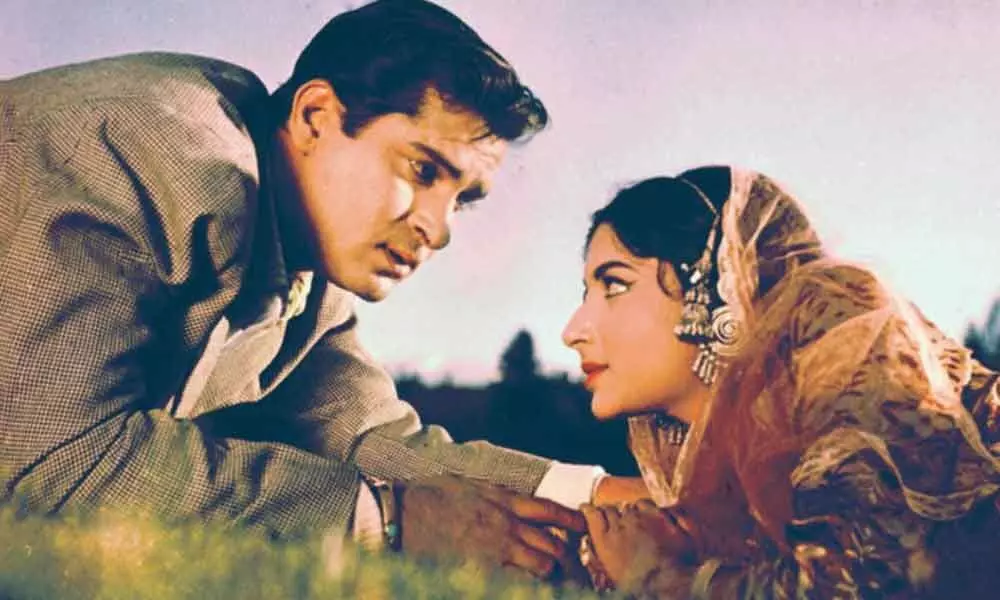Wordsmiths of a different era: Hindi film industry

The golden age of Hindi film-song lyrics was truly Indian and secular, liberally according space to various religions and political ideologies with Communists and Conservatives co-existing and coming up with their own works, which were lapped up eagerly by a new Indian audience. February is a monumental month marking anniversaries of legendary wordsmiths of Bollywood films
From the eastern part of Bihar to the extreme end of the Hindi belt in Kashmir, lyricists converged into the then Bombay, one after the other, from the 1940s, to lend weight to the Hindi film industry which was re-shaping into a dynamic machine, post- Independence, blending creativity and commerce. It was truly Indian and secular, liberally according space to various religions and political ideologies with Communists and Conservatives co-existing and coming up their own works, which were lapped up eagerly by a new Indian audience.
A recent study came up with nearly 20+ names of that golden phase of Hindi cinema, who were absolutely the go to people for songs suiting any occasion from patriotic numbers to mushy, teeny bopper stuff. The between-the-lines kind of words, which betrayed the political stances of its creators too were appreciated, given the contextual references it made, right across the time when India re-organised itself into a chaotic, yet functioning anarchy over the better part of the last century.
Rather uniquely, eight lyricists have their birth or death anniversaries in this month of February, a one-of-a-kind occurrence and a minor delight for trivia lovers of Hindi cinema. Beginning with Telangana-born Makhdoom Mohiuddin, a pride of the local gentry and Urdu poetry lovers who was born on February 4, 112 years ago ( see box), a procession of iconic lyricists who rocked the world with their passionate outpourings follows in the second month of the year.
Mohiuddin, the 'Shayar-e-Inquilab' is followed by Jan Nisar Akhtar from Gwalior, born on February 18, 1914, whose poetic family background has been sustained successfully by his son Javed Akhtar and grandson Farhan Akhtar. Then, in that order, based on their years of birth, the list continues with Kavi Pradeep (aka Ramchandra Narayanji Dwivedi) from Barnagar, Madhya Pradesh whose lyrics made Lata Mangeshkar choke and the then Prime Minister, Jawahar Lal Nehru wipe a tear with his song 'Ae Mere Watan Ke Logo'.
Shamshul Huda Bihari, or simply S H Bihari for his fans died this very month 33 years ago on February 25 after living for 65 years. His name identifies his state of origin explicitly and he was a rare specimen of a songwriter to that extent that he used to boast of being 'good with his hands and legs at the same time'. By this statement, as the famous film artiste, Tabassum, revealed in a programme, he meant that he could not only write excellent poetry but also play sports, specially football, as he represented the legendary Mohun Bagan team in Kolkata.
Hardly recognisable with his original name, Shyamal Babu Rai, Indivar,73, the famed spinner of rhythmic words died on February 27, 23 years ago. Born in Jhansi, Uttar Pradesh, Indivar is known for his adaptable wordplay which made him work with a range of music directors. Yet another lyricist also is of the same category with his original name Jaswant Rai Sharma, hardly resonating with his pen name Naqsh Lyallpuri. Born on February 24, 1928 in Faisalabad, Pakistan, Lyallpuri lived up to the age of 88, passing away just three years ago in January.
Nusrat Badr, whose name would ring a bell if one hums the hit song ' Dola Re, Dola Re' from the Shah Rukh Khan film 'Devdas' released in the new millennium was born on February 15, 1935 in Meerut and despite a limited output of songs went on to live and observe the changing music trends of the industry till 2020, as he died on January 24 after ailing for long. Nida Fazli is the last in the list, born in Delhi into a Kashmiri family , going on to grow up in Gwalior and making a mark in Hindi cinema. He died on February 8, 2016 at the age of 77.
Between them, these lyricists must have penned over 5000 songs, composing them over a long period of six to seven decades, each one reflecting their respective domain expertise. As mentioned elsewhere in this piece, these poets-turned- lyricists, mostly had a family tradition of Urdu literature and/or an abiding interest in reaching out to the public with their abundant talents.
Of course, with the passing years, those who could adapt and write accordingly could survive longer. The heady days of radical rebellion ushered in by the Communists soon after Independence gave way to chocolatey romance, which went on well into the 1960s succeeded by a borderline civil unrest in the 1970s, which softened with the romantic era of the 1990s, after a terrible phase of mundane writing in the 1980s. That a few of the names mentioned hitherto like Nusrat Badr managed to jell with modern day music titans like A R Rahman itself is a proof of their longevity.
It would be futile to go into the hit songs of each of these lyricists as the collection is indeed humongous. Yet, for the lovers of vintage Hindi film music, it would be an exciting exercise to read up trivia related to the birth of these evergreen numbers and how it was by and large customised with the active encouragement of the creators, the music directors. Each of these lyricists would only be joint favourites of the listeners of the songs from the golden era, as their body of work makes it impossible to stick to a solitary favourite or a few of them. As it was simply, word power at its impressive best.














